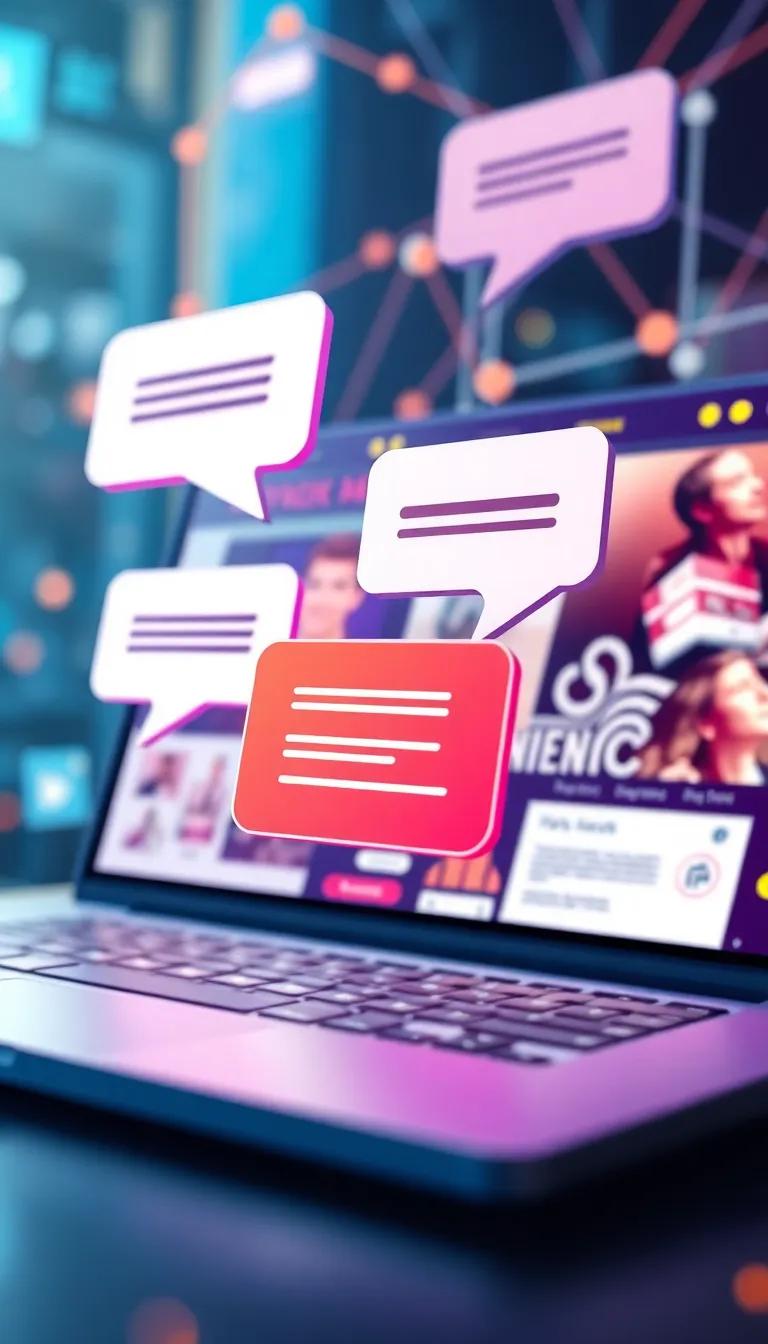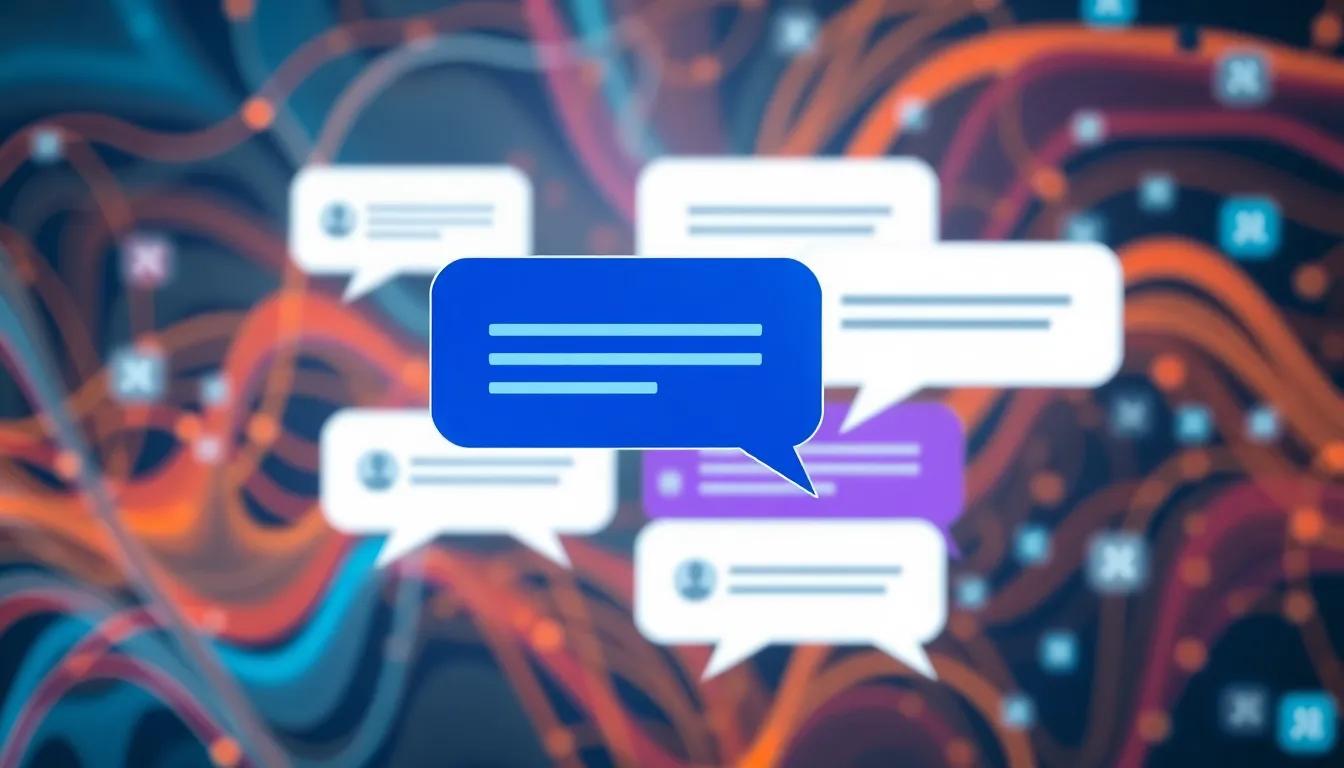Introduction
In today’s digital era, where instant communication plays a pivotal role in customer satisfaction, the implementation of chat solutions has become essential for website engagement. This comprehensive guide delves into how chat functionalities, particularly free chat guides, can enhance user interaction, improve customer service, and ultimately contribute to higher conversion rates. Companies increasingly recognize the significance of chatbots and online tools that facilitate real-time conversations, bridging the communication gap between users and service providers.
This article highlights crucial aspects of integrating chat functionalities on websites, emphasizing the characteristics of effective tools, and how they can be leveraged to create meaningful engagements. By exploring essential steps and considerations, we aim to equip you with the knowledge needed to optimize your website’s chat capabilities, ensuring that your business stands out in a crowded online marketplace.
Understanding the Fundamentals of Chat Functions The Technology Behind Chatbots Enhancing Engagement
The integration of chat functions on websites reflects a strategic enhancement of user engagement, fundamentally driven by the technology of chatbots. At its core, a chatbot is built on complex algorithms and machine learning that enable it to interpret user queries and deliver appropriate responses in real-time. The foundation of this technology typically includes Natural Language Processing (NLP), which allows chatbots to understand and process human language in a manner akin to how individuals communicate.
By leveraging NLP, chatbots can discern user intent, grasp context, and even identify nuances in language such as slang, making them increasingly effective in engaging users. This capability extends beyond simple question-and-answer interactions; chatbots are equipped with features such as automated responses, proactive engagement, and data analysis that inform businesses about user behaviors and preferences.
Another pivotal element is the backend infrastructure that supports chat functionality. Many websites utilize APIs that facilitate seamless integration of third-party chat solutions, allowing for customization according to industry needs. This flexibility enables a variety of features, such as live chat support, generated FAQs based on common inquiries, and advanced chatbot workflows that guide users toward their objectives in an effortless manner.
Chatbots enhance engagement not merely by responding to inquiries but by providing personalized experiences. They can analyze previous interactions with users to tailor responses, thus contributing to a unique user experience that builds brand loyalty. Additionally, by being available 24/7, chatbots ensure that businesses remain reachable, accommodating visitors from diverse time zones and those requiring assistance outside traditional hours.
As chat technology continues to evolve, integrating advanced analytics and customer relationship management (CRM) integration becomes feasible, driving targeted marketing initiatives based on user engagement data. This evolution not only elevates the functionality of chatbots but also aligns them with organizational growth strategies aimed at increasing conversion rates and customer satisfaction.
Understanding the basic principles of chat functions, grounded in robust technological frameworks, is vital for website owners seeking to enhance user engagement. The combination of NLP, machine learning, and seamless integration paves the way for a responsive and effective communication tool capable of transforming visitor interactions into meaningful engagements.
Benefits of Using Free Chat Tools Analyzing Cost Effectiveness and Accessibility for Businesses
The integration of free chat tools on websites presents an array of advantages, particularly in terms of cost-effectiveness and accessibility. Businesses of all sizes can significantly benefit from the implementation of these tools without incurring substantial financial burdens. This aspect is particularly crucial for small to medium enterprises, where budget constraints often limit access to advanced customer interaction solutions.
One of the most notable benefits of free chat tools lies in their zero or minimal cost, allowing businesses to engage with customers effectively without the financial stress often associated with traditional customer service methods. By eliminating the need for extensive investments in proprietary software or hire additional staff, organizations can allocate resources more strategically. The return on investment (ROI) can be remarkable, considering the enhanced customer satisfaction and retention rates that effective chat solutions foster.
Accessibility is another key advantage of utilizing free chat tools. In today’s global marketplace, where customers are often communicating online, having a readily available chat option ensures that businesses can connect with potential clients round-the-clock. This constant accessibility can create a competitive edge, as immediate responses to inquiries often lead to higher conversion rates.
Free chat tools are usually user-friendly, requiring little to no technical expertise to set up and manage. This simplicity enables businesses to implement chat solutions swiftly and efficiently, minimizing disruption to existing operations. It allows even the most technologically challenged users to engage customers effectively, fostering a more inclusive environment for diverse businesses.
Another significant benefit is data collection. Free chat tools often come with analytics features that enable businesses to gather insights on customer behavior and preferences. Analyzing this data can improve marketing strategies, product offerings, and overall customer experience. Understanding client needs through chat interactions provides valuable information that can enhance business strategies.
The advantages offered by free chat tools are multifaceted, focusing not only on cost-effectiveness but also on enhancing accessibility. For businesses looking to improve their online presence, integrating such tools is a viable strategy that can lead to substantial improvements in customer engagement and satisfaction. The next chapter will explore how to effectively integrate these chat tools into websites, addressing both technical and strategic considerations to maximize their impact.
Integrating Chat Tools with Your Website A Comprehensive Guide for Engagement
Technical and Strategic Approaches to Integration
Integrating chat tools into your website involves both technical implementations and strategic planning. The technical aspect requires selecting the right chat software that suits your needs and following the installation process. Most free chat tools offer plugins, APIs, or embed codes that can be easily integrated into various website platforms, like WordPress, Shopify, or custom HTML sites. Before proceeding, ensure that you have the necessary access rights to modify the website’s code or configurations. Following the software guidelines for integrating chat tools can be straightforward, but additional attention should be paid to compatibility with existing plugins or site functionalities.
Once the technical integration is complete, focus on the strategic placement of the chat tool. Positioning the chat widget prominently on your website can significantly enhance customer interactions. Options include placing it in the bottom right corner of the screen or showing it on specific pages such as product descriptions or FAQs. Experimenting with visibility settings, such as auto-opening after a visitor spends a certain time on the page, can also aid engagement.
Strategic Considerations for Optimizing Engagement
Beyond the technical setup, consider leveraging your chat tool to engage visitors effectively. Start by crafting welcoming messages that are not overly aggressive. A simple “Hi there! How can I assist you today?” can create a friendly atmosphere. Personalizing the chat interactions can further enhance user experience; key user information can be used to tailor conversations, making each visitor feel valued.
Strategically planning the chat hours is also fundamental. If support can only be offered during specific hours, ensure that visitors are informed about this in advance. Automated responses can fill gaps during non-support hours, letting users know when they can expect a follow-up. It is also vital to establish a plan for chat escalation so that more complex queries can be seamlessly transferred to a human representative.
Remember to analyze chat interactions regularly. Use built-in analytics tools to monitor engagement metrics such as response times and visitor satisfaction rates. These insights are invaluable for continuous improvement of your chat strategy, ultimately leading to enhanced user engagement and satisfaction.
Best Practices for Effective Chat Interactions in Website Engagement
In an era where customer communication can make or break an online presence, businesses must prioritize effective chat interactions. This process is not solely about having a chat widget on your website; it involves creating a positive and seamless experience for visitors. Key to achieving this are strong communication skills and rapid responsiveness from chat agents.
Communication Strategies
First and foremost, clarity is paramount. Chat agents should strive to express information in a clear, concise manner. Using jargon or overly complex language can alienate customers and lead to misunderstandings. In addition, adopting a friendly and approachable tone can make customers feel more comfortable engaging with the chat representatives. A personalized greeting can also set a warm tone for the conversation, fostering a connection that can enhance customer satisfaction.
Active listening plays a critical role in effective communication. Agents must pay close attention to the customer’s needs and concerns, responding thoughtfully rather than simply going through a script. This means asking clarifying questions if the customer’s inquiry is vague and ensuring that the customer feels heard. By doing this, agents are likely to provide solutions that address specific issues rather than offering generic responses.
Responsiveness and Efficiency
Another aspect of effective chat interactions lies in responsiveness. In today’s fast-paced world, customers expect quick resolutions. Delays in response can lead to frustration and ultimately drive visitors away. Implementing features such as automated greetings can help ensure that customers feel acknowledged even during peak times. However, it’s essential that the transition from automated responses to live agents happens smoothly, with minimal waiting times.
Chat agents should also be equipped with the tools necessary to provide immediate assistance, such as access to FAQs, product databases, and customer information. This access facilitates quick reference, enabling agents to respond efficiently and accurately. The combination of prompt responses and effective problem-solving can significantly enhance user satisfaction and engagement.
By honing communication skills and prioritizing responsiveness, businesses can ensure their chat interactions are not only effective but also meaningful. As customers engage with the chat feature on a website, these best practices serve to create an enriching experience that contributes to stronger online engagement.
Measuring the Success of Your Chat
Effectively assessing the impact of chat tools on your website requires a strategic approach focused on measurable outcomes. Utilizing the right metrics can provide insight into user engagement and the overall success of your chat solutions. Identifying what to measure is as critical as implementing the chat solution itself.
Metrics to Consider
To gauge the effectiveness of your chat systems, several key performance indicators (KPIs) ought to be considered:
- Chat Conversion Rate: This metric measures the percentage of chat interactions that result in a desired action, such as a purchase, sign-up, or lead generation. A higher rate indicates better performance of the chat tool.
- Visitor Engagement Duration: Tracking how long visitors spend engaged with the chat can reveal its effectiveness. Longer engagement times often correlate with higher satisfaction levels.
- Response Time: Quick response times are critical; measure the average time taken to answer inquiries. A faster response typically enhances customer satisfaction and can lead to increased conversions.
- Customer Satisfaction Score (CSAT): Gathering feedback from users after chat sessions helps assess their satisfaction levels directly. Implementing a short survey can yield valuable insights.
- Chat Volume: Understanding how many chats occur within a specific timeframe can indicate your chat tool’s traffic and effectiveness in engaging customers.
Strategies for Effective Measurement
Utilizing analytics tools can streamline the process of measuring these metrics. Tools such as Google Analytics can provide tracking capabilities not only for chat interactions but also for user engagement behavior before and after initiating chats. Implementing A/B testing can also help identify which chat strategies are most effective. For instance, testing varied chat prompts or support hours can yield data on user preferences and effectiveness.
Consider integrating chat tools with customer relationship management (CRM) systems. This integration allows for a comprehensive view of customer behavior and provides insights into how chat interactions influence overall customer journeys.
Creating a feedback loop by periodically reviewing metrics and making necessary adjustments will ensure that your chat implementations evolve based on user needs and preferences. This adaptive approach not only enhances the chat experience but also solidifies the role of chat solutions in your overall engagement strategy.
Future Trends in Chat Technologies
Anticipating Innovations in Chat Technologies
The landscape of chat technologies is on the brink of transformation, driven by relentless advancements in artificial intelligence, machine learning, and natural language processing. As businesses strive to enhance their online presence, the future of chat as a vital engagement tool holds significant promise. These innovations are set to redefine how brands communicate with their audiences, creating more dynamic and responsive interactions.
One key trend is the emergence of conversational AI, which can simulate human-like conversations more effectively than ever. This evolution will enable chat systems to not only understand context and intent but also adapt responses based on ongoing dialogues. For instance, users may experience chat solutions that not only respond to inquiries but also remember past interactions, making conversations feel more personalized and cohesive.
Integrating advanced analytics into chat systems will also play a pivotal role. Future chat technologies will likely leverage data to analyze user interactions in real-time, offering insights that can significantly enhance engagement strategies. Businesses could utilize these analytics to fine-tune their chat outreach—altering responses, suggesting products, or identifying customer pain points more efficiently. This level of customization represents a robust approach to engaging website visitors, thus enhancing their overall experience.
Leveraging Augmented and Virtual Reality in Chat Solutions
Another exciting development on the horizon is the incorporation of augmented reality (AR) and virtual reality (VR) elements into chat interactions. Imagine a scenario where a customer can visualize a product through a chat interface using AR, or receive virtual consultations via VR. These immersive experiences can greatly enhance decision-making processes, as customers gain a comprehensive understanding of products before making purchases.
Beyond visual enhancements, future chat technologies may foster more inclusive communication. By integrating multilingual capabilities and accessibility features, brands can reach diverse audiences more effectively, breaking down barriers that once limited customer engagement. Such advancements will empower companies to create a more inclusive online environment where every voice is heard.
As these chat technologies continue to evolve, they are poised to dramatically impact website engagement. By adopting these future advancements, businesses can not only enhance communication but also cultivate stronger relationships with their audience, transforming passive website visits into meaningful interactions.
Conclusions
As we’ve explored throughout this guide, the integration of chat solutions is not merely an option but a necessity for modern websites aiming to boost engagement and provide superior customer experiences. By employing effective chat methodologies, businesses can cater to user needs in real time, actively participating in their decision-making processes, and thereby enhancing overall satisfaction.
The benefits of adopting a free chat guide extend beyond immediate customer interactions. They foster long-term relationships built on trust and responsiveness. As your website evolves, incorporating advanced chat functionalities will continue to be a vital strategy for ensuring ongoing engagement and loyalty among your audience.



















